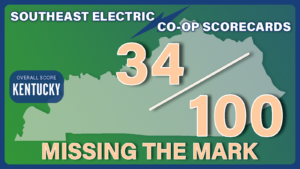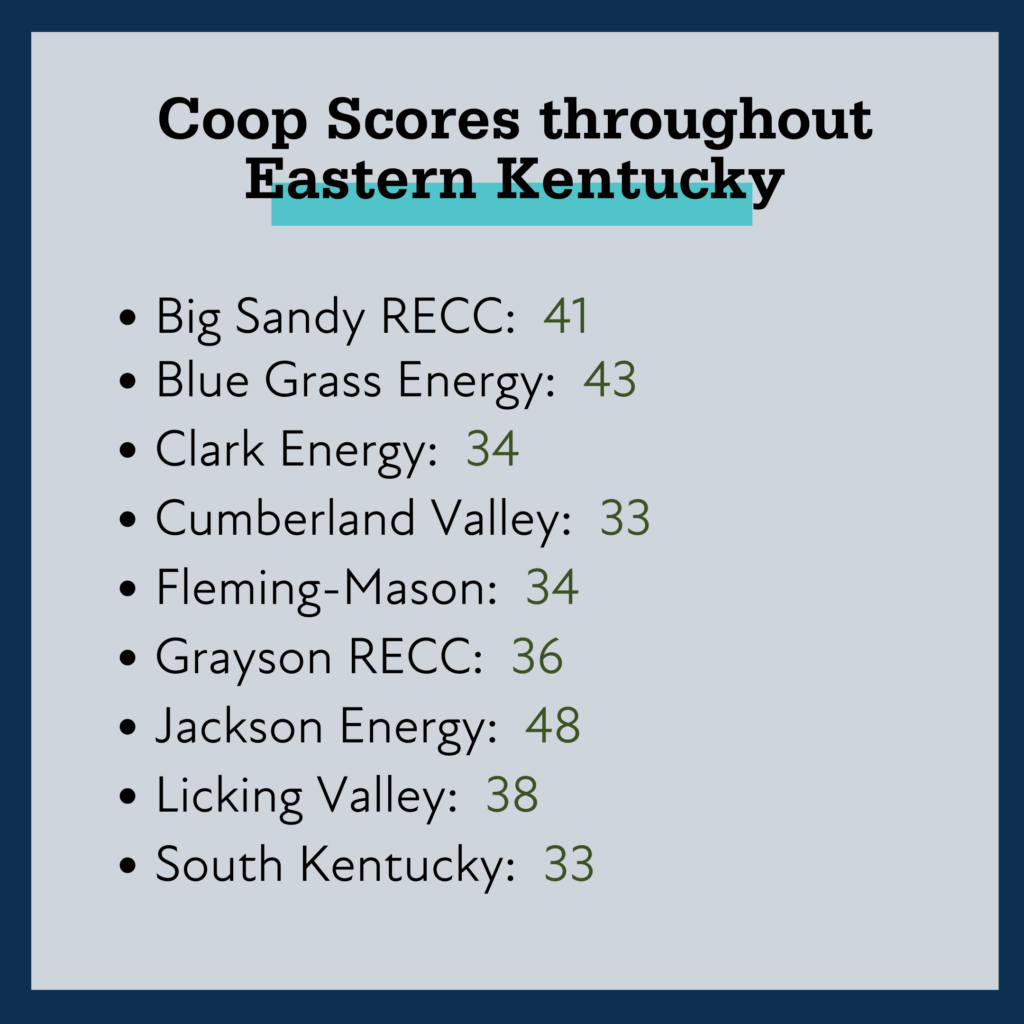Today, Mountain Association and Kentuckians For The Commonwealth released scorecards assessing Kentucky’s 24 rural electric cooperatives on their governance practices and types of programs offered to co-op member-owners. In Kentucky, these co-op utilities provide power to 1.5 million people in 117 counties.
Our co-ops purchase nearly all of their electric power from the Tennessee Valley Authority, East Kentucky Power Cooperative, or Big Rivers Electric. Two of these utilities – EKPC and Big Rivers – are among the most coal-intensive power providers in the United States and owe billions of dollars to the federal government for their fossil-fueled energy infrastructure.

The Inflation Reduction Act includes nearly $12 billion for rural electric co-ops to invest in energy efficiency and renewable energy systems, with billions more to help rural residents, small businesses, agricultural producers and local governments benefit from clean energy upgrades. Co-op member-owners have a vital role in shaping how their utilities seize this moment.
The scorecards are intended to support Kentuckians to engage with their local coop and speed the transition to affordable and clean energy. By rating the performance of cooperatives in relevant areas, this tool can provide member-owners and co-op management a roadmap for reform.
How Kentucky Coops Scored
As a whole, Kentucky’s co-ops averaged just 34.1 out of 100 possible points with 20.6 out of a possible 50 for services and 13.5 out of 50 points for governance. Jackson Energy ranked highest overall with a score of 48, while Meade County Electric earned just 16 points out of 100.
“Until learning about this project, I did not know that as member-owners our community actually has a say in how our electric co-op operates. This project has empowered us to do more about our electric usage than just turning off the lights,” stated Kathy Curtis, Prioress of a Benedictine monastic community in Floyd County served by Big Sandy Rural Electric. “People in my area are suffering from high electric bills and catastrophic flooding. We urgently need our co-ops to partner with communities to deliver widespread, affordable, and clean energy solutions.”

Established by the Rural Electrification Act of 1936, co-ops have brought electricity to rural communities that private corporations did not find profitable to serve. The unique, member-owned structure of co-ops as nonprofit utilities means that they are intended to be governed by their members and aligned with principles outlined by the National Rural Electric Cooperative.
Detailed Reports for Each Coop
The scorecards evaluate each of Kentucky’s 24 cooperatives in two broad categories: member services and governance. Each co-op can earn up to 50 points for offering programs like inclusive financing for home weatherization, community solar options, fair compensation for energy generated by rooftop solar, broadband internet, the ability to opt-out of right-of-way spraying, and the ability to protect medically vulnerable households from disconnections due to non-payment. In the governance category, co-ops can earn up to 50 points for making board meetings and documents open and accessible, providing clear and accessible ways to communicate with the board, posting bylaws and IRS 990 forms on their website, and having accessible and democratic board election procedures.
“With skyrocketing electric bills and the climate crisis at our doors, these scorecards give Kentuckians the tools they need to engage their co-ops to make the changes they deserve,” said Chris Woolery, an energy specialist at the Mountain Association.
“In the past few months, the federal government has allocated unprecedented funding to help co-ops pay for the changes that will move us to a clean energy future. Now is the time for us to help our co-ops take advantage of this moment to make our homes and communities healthier and more resilient, create good local jobs, and lower our bills.”
The Southeast Regional Electric Cooperative Scorecard is hosted on the website EnergyDemocracyYall.org, where visitors can find all the specifics about their co-ops’ score.
Additionally, the East Kentucky Power Cooperative, which is owned by 16 rural electric coops in Eastern and Central Kentucky, recently submitted its Integrated Resource Plan. It is open for public comments now until December 15. Find more info from Kentuckians for Energy Democracy on why this is important here.
About this project:
The scorecard release is part of a joint effort between Appalachian Voices, Shareable, Partnership for Southern Equity, Energy Alabama, One Voice, Kentuckians for the Commonwealth and Mountain Association via the Advancing Equity and Opportunity Collaborative. Scorecards were released on November 16, 2022 for rural electric co-ops in Alabama, Georgia, Kentucky, Mississippi, North Carolina, Tennessee and Virginia.





